Is your company juggling multiple projects with cross-functional teams? You might be considering a matrix organizational structure to improve collaboration and resource use.
While it offers flexibility, a matrix structure also brings unique challenges like dual reporting and potential conflicts.
This guide breaks down what a matrix structure is, its pros and cons, and crucially, how you can leverage a project management platform like monday.com to navigate its complexities and empower your teams for success. Let’s dive in.
What is a matrix organizational structure?
In a matrix company structure, an employee often reports to at least two managers, representing different lines of command – typically a functional manager and a project manager. This organizational design emphasizes dual reporting relationships.
Unlike traditional hierarchical structures where command flows vertically, the matrix adds a horizontal layer for project-based work, leading to a grid or “matrix” of authority. Check out this matrix structure example:
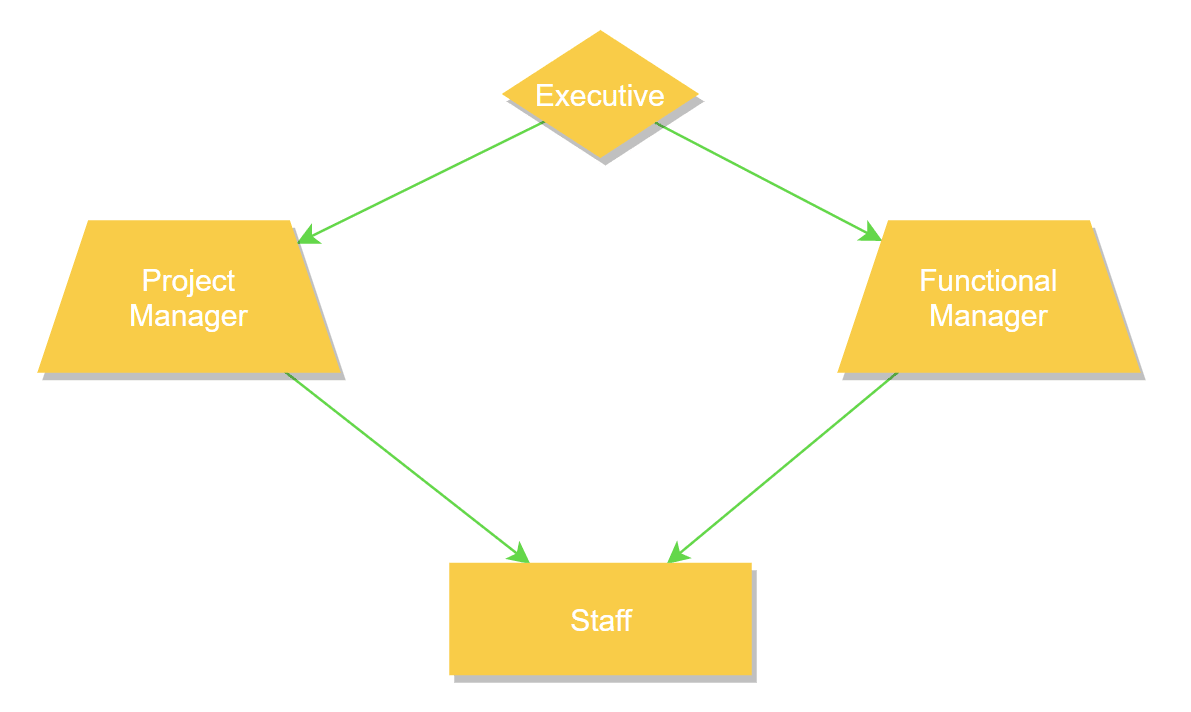
In a traditional top-down company structure, everyone fits neatly into their little box. For example, a sales representative reports to the sales manager, who reports to the head of sales, who reports to the CEO. It’s a simple, linear chain of command.
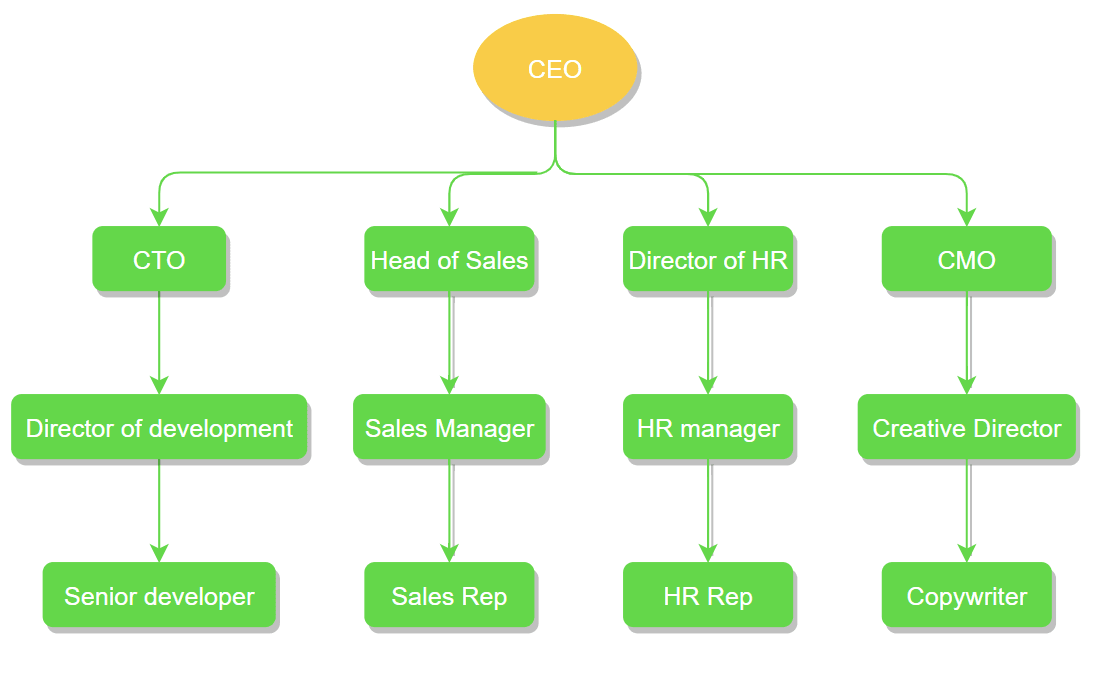
The same is true for designers, copywriters, developers, and HR reps. For day-to-day business processes, this organization structure works well enough. But when you add projects to the mix, not so much.
Functional manager vs. Project manager roles
A functional manager heads a particular office or department based on a job function. Think marketing, sales, support, human resources (HR), and more. They are responsible for developing their team’s skills, performance reviews, and allocating their team members to various projects.
A project manager leads a project and can manage staff from a wide range of departments and offices. They are responsible for the successful planning, execution, and completion of specific projects, coordinating resources across different functional areas.
For projects, a cross-functional team is often ideal. With a diverse set of talent, they can complete the entire project without too much outside input.
Enter the humble project manager.
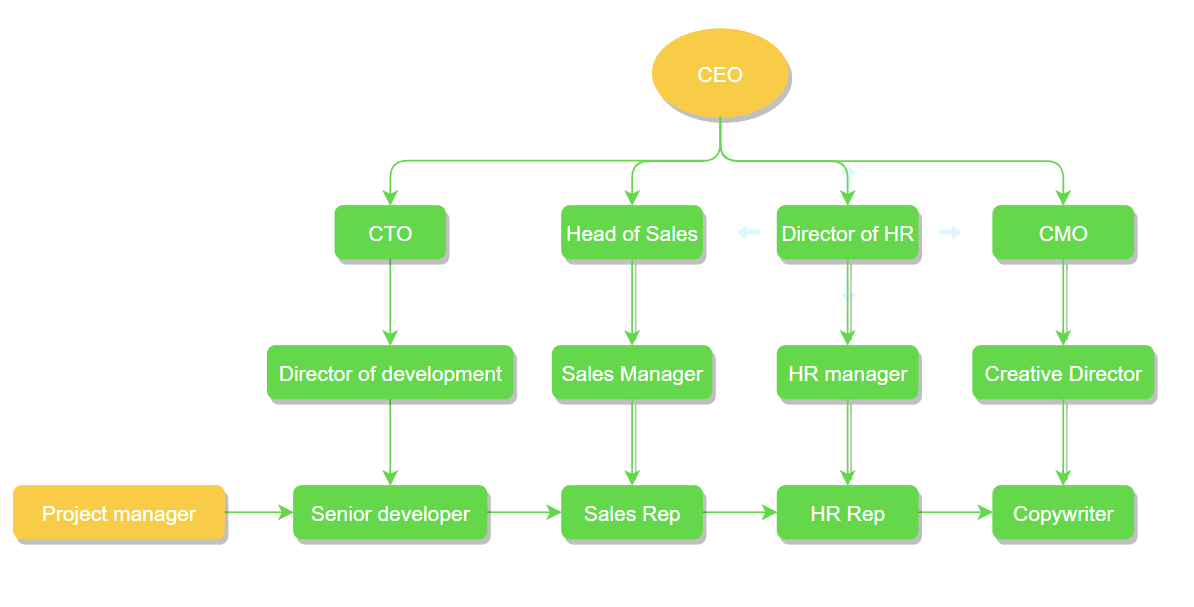
They represent a new “horizontal” chain of command and are the linchpins for making projects happen. For example, let’s imagine you want to rework the landing page experience for your company’s HR product.
Sure, your developers could create the page alone within their department. But they would probably end up creating an experience that caters to techy developers, not stressed-out HR managers.
For the ideal results, a project manager will recruit talent across departments:
- From development, a front-end developer, to create the new experience.
- From HR, an HR rep who uses your software for their perspective.
- From sales, a sales rep or account manager to get the customer perspective.
- From marketing, a designer and a copywriter to design and write the new content.
A project manager will ensure that they communicate, work together, and meet deadlines, just like the “responsible one” in a school project.
Depending on the company, the project manager can have less or more authority than a functional manager.
What are the 3 types of matrix structures?
There are three main types of matrix structures, differentiated by the level of authority held by the project manager versus the functional manager:
Weak matrix structure
In a weak matrix, the project manager has limited authority (low project authority) and primarily serves as a coordinator or expeditor. Functional managers retain most of the power and control over resources and project aspects. Team members may feel a stronger allegiance to their functional department.
Balanced matrix structure
Power is shared more evenly between the project manager and functional managers (functional authority vs. project authority). Both have a say in resource allocation and project decisions, requiring good communication and collaboration. This can sometimes lead to conflict if roles and responsibilities aren’t clearly defined.
Strong matrix structure
The project manager has considerable authority (high project authority) over the project and resources, often more than functional managers regarding project activities. There might be a dedicated project management office (PMO) and full-time project managers. Employees may feel a stronger allegiance to the project team.
Although the names suggest otherwise, a strong matrix organization isn’t inherently better than a weak one. It depends on your company’s industry, products, and priorities.
What are the advantages of a matrix structure?
Adopting a matrix structure can bring significant benefits to an organization.
Let’s take a closer look.
Enhanced information flow and communication
Matrix structures inherently break down departmental silos by design. Team members from different functions work together on projects, leading to improved knowledge sharing and a more holistic understanding of organizational goals. Communication lines are more open, fostering quicker problem-solving and innovation.
Efficient use of resources and specialized skills
The matrix organization structure helps you use your staff to their fullest potential (skill utilization). For most projects, you’re better off recruiting internally from your organization than starting a hiring process from scratch.
Not only will you save money, but you’ll also finish the projects faster. Instead of letting your staff settle into a monotonous routine, you can involve them in exciting work that matters while expanding their skill sets and increasing company value.
Increased employee engagement and skill development
Matrix management leads to employees who are more engaged at work. The more matrixed an organization is, the more engaged the employees are.
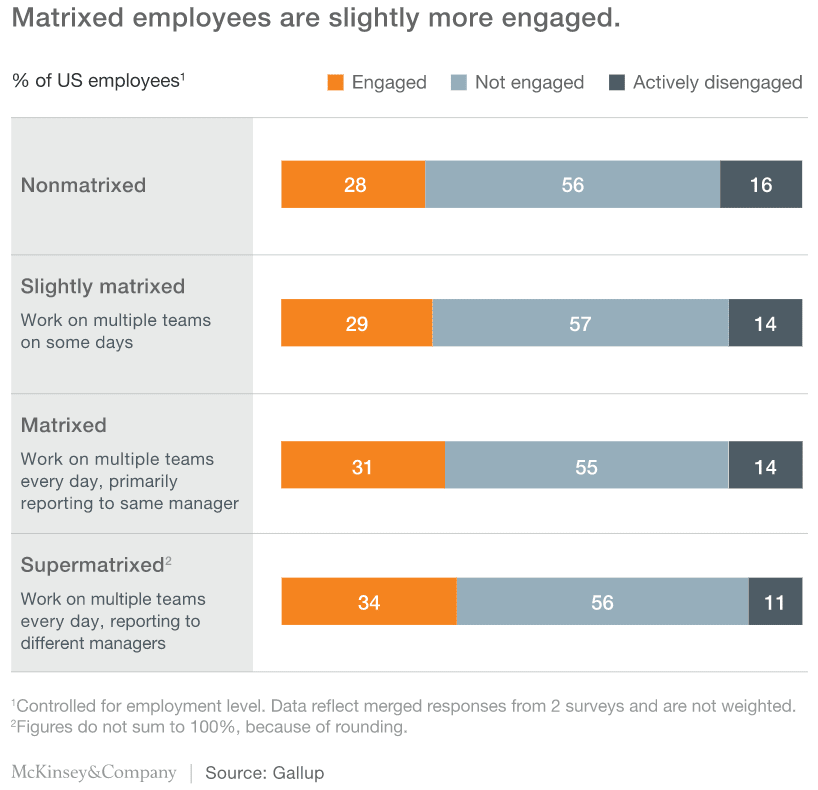
It may seem counterintuitive since they have to deal with not just 1 manager, but at least 2, on a daily basis. In industry jargon, we call it a dual reporting relationship, which somehow makes it sound even worse.
But let’s think about what makes someone engage with their work for a second.
One of the most important factors for employee engagement is feeling like you make a difference. What better way to feel that than to be an active part of a project from start to finish? Working on diverse projects also provides opportunities for employee development by exposing them to new challenges and skills.
Greater flexibility and adaptability to projects
A matrix structure allows organizations to be more flexible and responsive to changing market demands or project needs. Resources can be reallocated quickly to where they are most needed, and project teams can be assembled and disbanded efficiently. This adaptability is crucial for companies in fast-paced industries.
What are the challenges of a matrix structure?
While the matrix structure offers many benefits, it also comes with a unique set of matrix management challenges. Understanding these potential pitfalls is the first step to mitigating them.
Potential for conflicting priorities and manager disputes
With employees reporting to both a functional manager and one or more project managers, conflicting priorities and directives are common. Functional managers may focus on departmental goals and skill development, while project managers are driven by project deadlines and objectives. These differing perspectives can lead to disputes over resource allocation and employee time.
Confusion over roles, responsibilities, and reporting lines (dual reporting issues)
The dual reporting nature can create role ambiguity. Employees might be unsure about who has ultimate authority, to whom they should report specific issues, or whose direction to follow when instructions conflict. This lack of clarity can lead to stress and reduced efficiency.
Slower decision-making processes
The need for consultation and agreement between multiple managers can sometimes slow down decision-making. Reaching a consensus can be time-consuming, especially in balanced matrix structures where power is shared. This can be a disadvantage in situations requiring rapid responses. This also increases communication overhead.
Increased workload and stress for employees
Employees in a matrix often juggle responsibilities from their functional roles and multiple projects. This can lead to increased workloads, pressure to meet competing deadlines, and higher stress levels if not managed properly.
When is a matrix structure the right choice for your company?
A matrix structure isn’t a one-size-fits-all solution. It tends to be most effective in specific situations:
- Complex projects: When companies handle large, complex projects that require expertise from various functional areas (e.g., launching a new product).
- Multiple product lines or markets: For organizations that operate with multiple product lines, serve diverse customer segments, or work across different geographic regions.
- Need for specialized skills: When there’s a need to share scarce or highly specialized resources across different projects rather than duplicating them.
- Dynamic environments: In industries that are rapidly changing and require high levels of flexibility and information processing.
- Focus on dual objectives: When there’s a simultaneous need to focus on both functional expertise/excellence and project/product delivery.
Smaller companies or those with very stable environments might find the complexity of a matrix structure unnecessary.
How to make a matrix structure succeed with monday.com
Successfully implementing a matrix structure requires more than just redrawing the org chart; it demands robust systems for communication, collaboration, and clarity. This is where a work management software like monday.com’s Work OS becomes invaluable. While a matrix structure can sometimes lead to data silos or communication breakdowns if not managed well, monday.com helps overcome these issues.
Data from studies indicate that a whopping 80% of companies reported a moderate or high degree of data silos, a challenge that persists in many organizations lacking centralized systems.
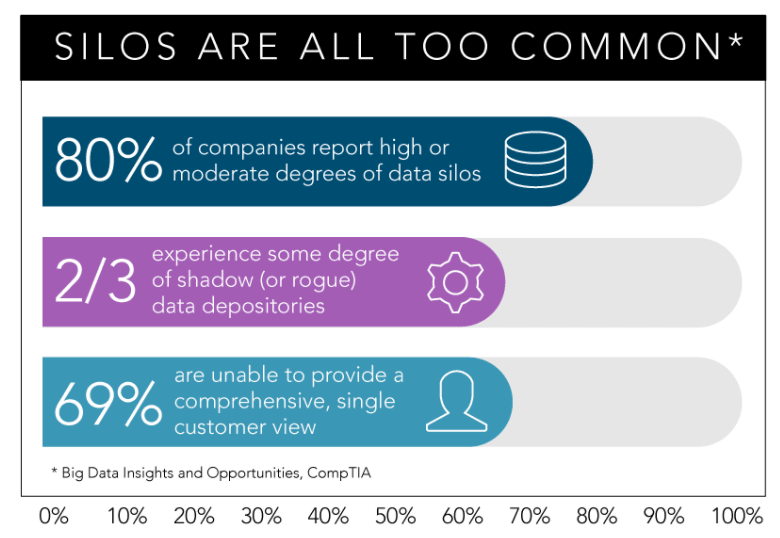
Many companies use a patchwork of tools, which can exacerbate silos. You need a unified collaboration platform like monday.com’s Work OS provides the foundation for your digital workspace, offering the views, templates, and functionality to support matrix teams effectively.
Improve company-wide collaboration and remove silos with a Work OS
Many companies use a patchwork of tools, which can exacerbate silos.
You need a unified collaboration platform. monday.com’s Work OS provides the foundation for your digital workspace, offering the views, templates, and functionality to support matrix teams effectively.

Here’s how monday.com helps matrix structures thrive:
Clarify roles and responsibilities with visual project boards
Use monday.com’s customizable visual project boards to clearly define tasks, assign owners (both project and functional if needed), set deadlines, and track progress. For example, a marketing campaign board can have columns for ‘Project Lead’, ‘Functional Reviewer (e.g., Brand Manager)’, and ‘Status’, ensuring everyone knows their part in achieving project visibility.
Different views like Kanban, Gantt, and Calendar allow teams to visualize work in ways that suit them, while the underlying data remains consistent.
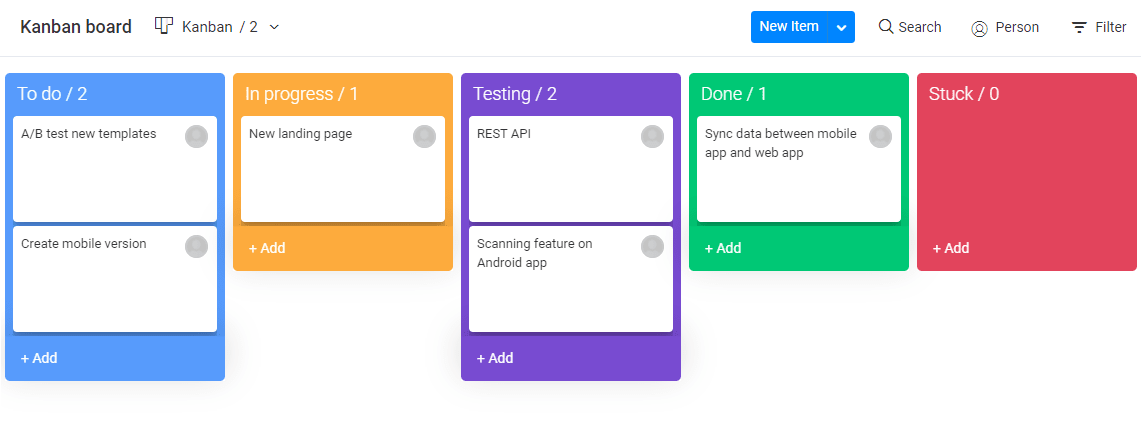
Streamline communication and break down silos with centralized updates
With comments and discussions directly on projects, work items, and files, no information gets lost in scattered email threads or siloed communication channels. You can still use mentions, emojis, and add attachments, so it’s not like your staff will lose the ability to express themselves.
This ensures both project and functional managers stay informed. For instance, an automation can notify both managers when a task status changes, ensuring centralized updates.

Manage resources effectively across projects and departments
One of the biggest challenges in a matrix is resource planning and allocation. monday.com’s Workload view helps visualize who is working on what, across all projects. This allows managers to identify overallocated team members, make informed decisions about resource assignments, and prevent burnout—a common issue when employees have multiple reporting lines.
Align functional and project managers with shared dashboards
Create shared dashboards that provide both project managers and functional managers with the insights they need. Dashboards can pull data from multiple boards, offering a high-level overview of project progress, resource utilization, budget tracking, and potential bottlenecks.
For example, a dashboard can show KPIs relevant to a specific project alongside functional department performance metrics for team members involved.
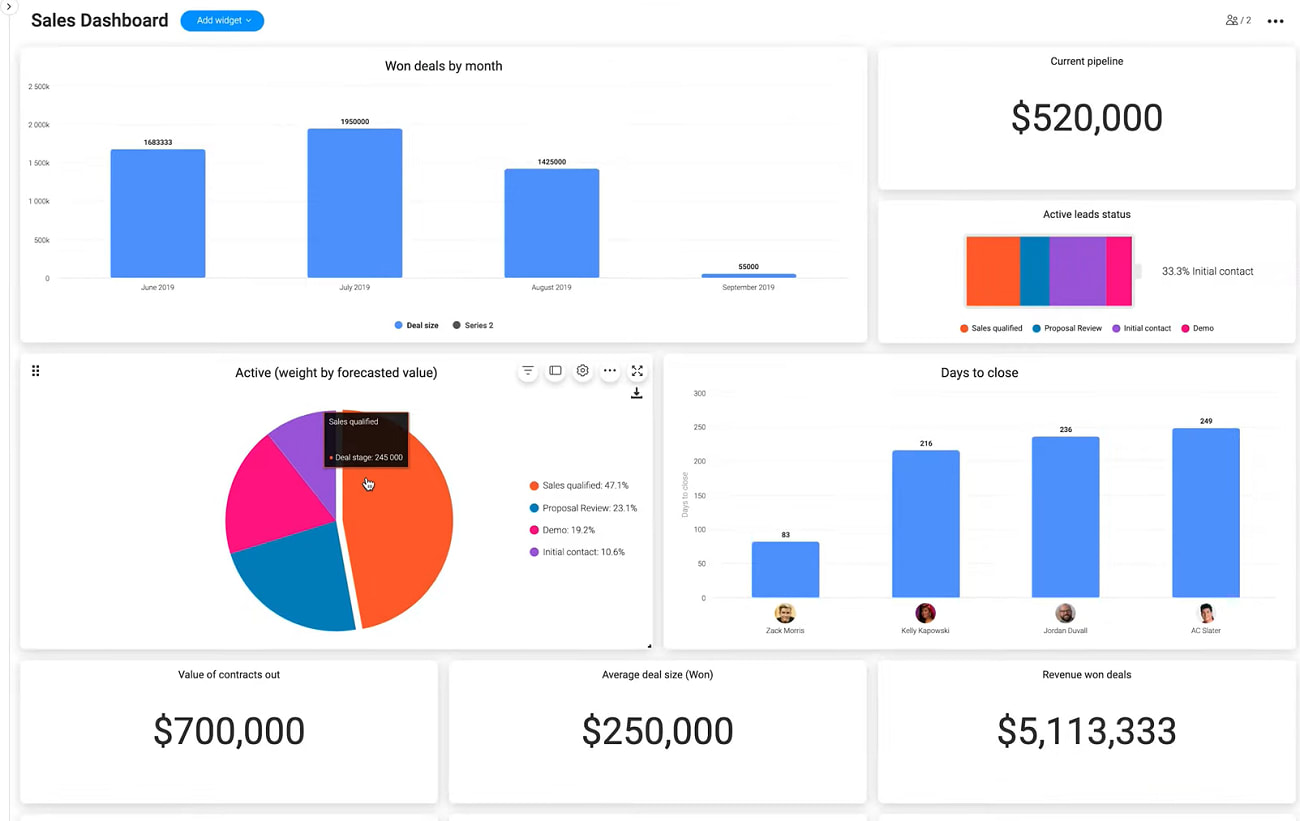
Need better visibility for your project and functional managers? Try our dashboard widgets.
Automate workflows to reduce confusion and ensure accountability
Use monday.com’s Automations to streamline processes, reduce manual work, and ensure clear lines of accountability. For example, set up an automation so that when a task is marked as ‘Complete’ by a team member, both their project manager and functional manager are automatically notified. This workflow automation helps manage task dependencies and keeps everyone in the loop.
Integrate with other software using native integrations for CRMs, marketing platforms, email, messaging apps like Slack and MS Teams, helpdesk software, and more to ensure data flows seamlessly.
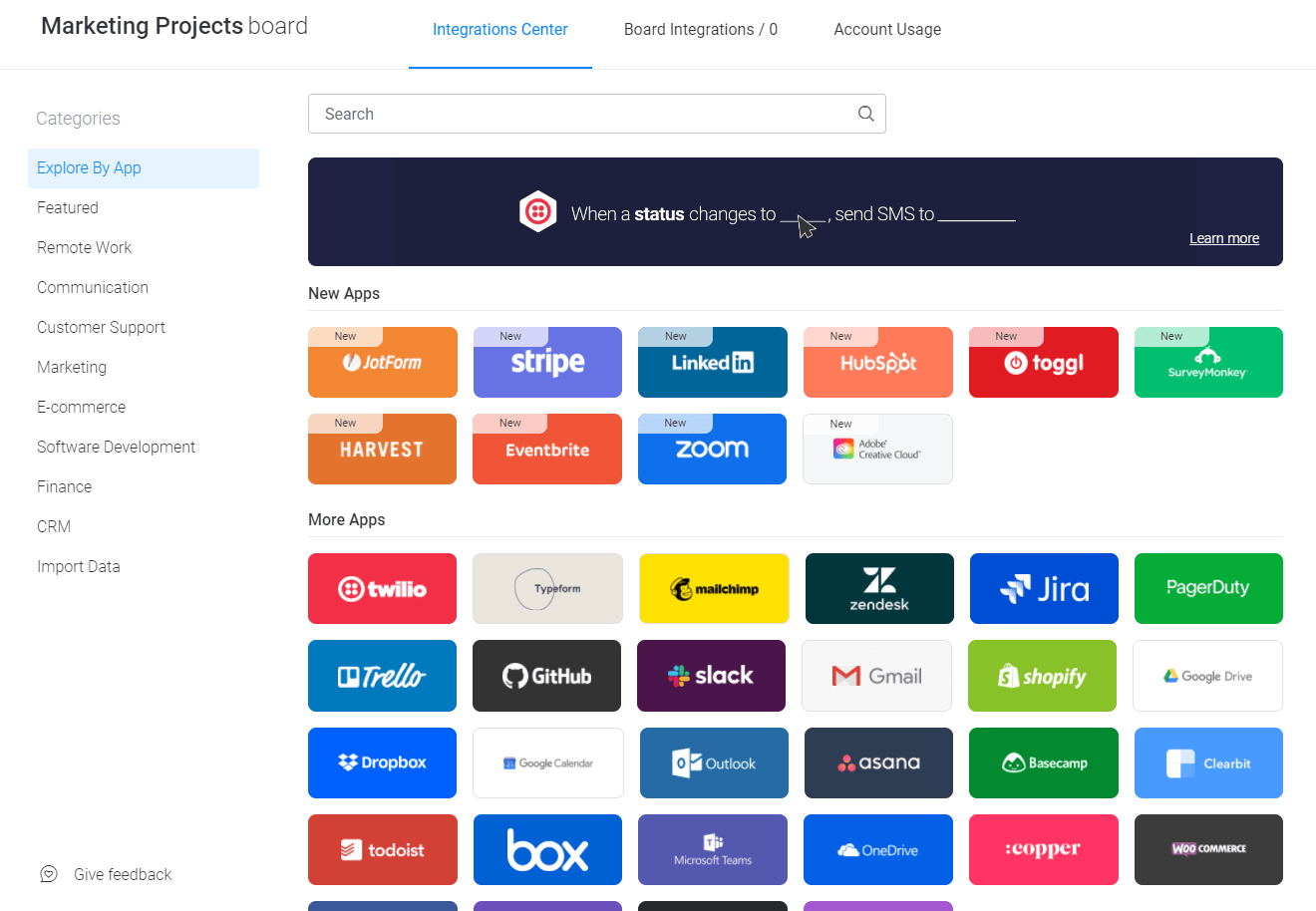
See how monday.com helps manage complex matrix teams.
Real-world examples of companies using a matrix structure
Many successful global companies utilize matrix structures to manage their complex operations. For instance, multinational corporations like Philips or Procter & Gamble have historically used matrix structures to manage product lines across different geographic regions.
Engineering and aerospace companies like NASA or Boeing often use matrix structures for large-scale projects that require diverse expertise.
These companies rely on robust project management platforms and clear communication protocols to navigate the complexities of dual reporting and ensure alignment between functional departments and project goals.
Beyond the matrix: Building a collaborative future with monday.com
While a traditional company structure has its place, the dynamic nature of modern work often demands more flexibility and collaboration.
Adopting a matrix structure can be a powerful way to ensure essential projects get completed efficiently by leveraging diverse talent across your organization. It encourages a focus on both specialized expertise and project-specific goals.
However, the structure itself is just the beginning. To truly thrive, a matrix organization needs the right tools and mindset. With monday.com’s Work OS, you can effectively manage the complexities of a matrix structure, foster company-wide collaboration, and empower your teams to achieve more, together.
Build a more connected, transparent, and efficient future for your organization, whether you’re fine-tuning your matrix or exploring new ways to work.
FAQs
What are the biggest disadvantages of a matrix structure?
The main disadvantages include potential for conflicting priorities between managers, confusion over roles and reporting lines (role ambiguity), slower decision-making due to the need for consensus, and increased workload or stress for employees juggling multiple responsibilities.
How do you resolve conflicts between managers in a matrix structure?
Conflicts are best resolved through clearly defined roles and responsibilities from the outset, established communication protocols, regular meetings between managers to align priorities, and a clear escalation path for unresolved issues. Using a platform like monday.com for transparency in tasks and progress can also help prevent conflicts.
Is a matrix structure suitable for small businesses?
Generally, matrix structures are more complex and better suited for larger organizations dealing with multiple projects or product lines. However, small businesses can apply some matrix principles, like cross-functional project teams, especially if they use a scalable platform like monday.com to manage the work.
How does a matrix structure impact employee performance reviews?
Performance reviews in a matrix structure should ideally involve input from both the functional manager (who assesses skill development and overall performance) and the project manager(s) (who assess performance on specific projects). This provides a more holistic view of an employee's contribution.
What's the difference between a projectized organization and a strong matrix?
In a projectized organization, the project manager has full authority, and team members are often dedicated solely to project work, with functional departments playing a support role or not existing in a traditional sense. In a strong matrix, project managers have significant authority, but employees still report to a functional manager, maintaining a connection to their home department.
How can monday.com specifically help manage dual reporting lines?
monday.com helps by providing clarity on tasks, ownership, and deadlines through visual boards. Shared dashboards ensure both managers have access to the same information. Communication features keep everyone updated, and automations can ensure both managers are notified of progress or issues, reducing confusion and supporting clear accountability.
